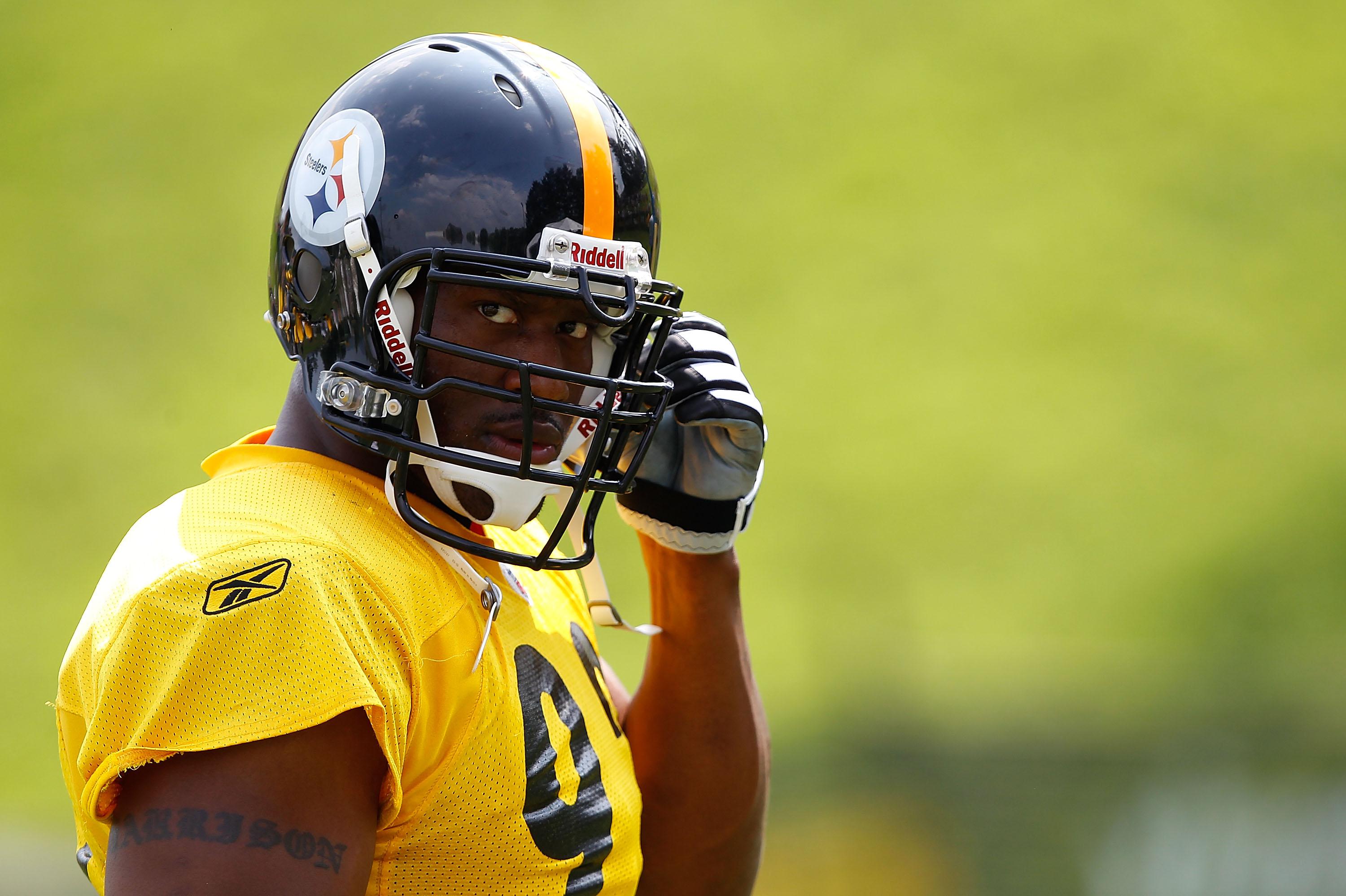I like the idea of James Harrison deliberately giving himself up as a scapegoat so that the NFL can demonstrate how very serious it is about protecting its players. It’s nice to think that someone somewhere might have seen a rational benefit—however cynical—in what Harrison did to Colt McCoy. Otherwise, it was an especially pointless play, even by Harrison’s idiosyncratic standards.
Most of Harrison’s viciousness has made sense as gamesmanship: The Steelers will occasionally give up 15 yards—and Harrison will sacrifice a few tens of thousands of dollars in fines—in exchange for unnerving their opponents. It’s one thing to know that the rulebook says a defenseless receiver has the right to focus on the ball while making a catch; it’s another thing to actually lower your defenses. The people who wrote the rulebook aren’t the ones who’ll be leaving the field on a cart if they take their eyes off Harrison.
So Harrison’s bluster is usually part of the act. Hey, he’s the one who has to interpret the rules in real time, right? It’s so tough to get the timing perfect. Frustrating! And Harrison unfortunately tends to err on the side of aggression. “We know how hard he’s worked to play within the rules,” Steelers coach Mike Tomlin said.
This is ugly but defensible. Nobody wants to be Washington cornerback DeAngelo Hall, who pulled up instead of hitting the Patriots’ Rob Gronkowski—wrapped up by two other Washington defenders and apparently headed out of bounds—only to see Gronkowski break both tackles, avoid the sideline, and churn another 30 or 35 yards.
Harrison’s hit on McCoy—a helmet-to-helmet shot on a rollout, delivered after the Browns quarterback had released a pass—looked like blatant headhunting. Harrison said afterwards that he’d thought McCoy was keeping the ball, and the same brain-scrambling hit that’s illegal against a passer or receiver is perfectly fine against a ball-carrier.
But Harrison’s professional responsibility is to know where the ball is. Decking a receiver too early, while the play is in front of him, is a crime of over-attentiveness. Roughing the passer, with the play already behind him, was just sloppy and brutal. Saying he didn’t know the passer was passing only makes Harrison sound sloppier.
In their sheer meanness, the play and its aftermath made me wonder if Harrison is turning into the NFL’s version of Andrew Golota—the Polish heavyweight boxer who decided he liked biting people or punching them in the crotch better than he liked winning fights. Harrison showed Colt McCoy who was boss, which was not really much of an open question, and now the Steelers have to play the 49ers without him.
Who knows? Maybe Harrison was truly confused by McCoy’s scrambling. It all looks so clear on the replay, but the replay is a privileged way of looking at the game. On reflection, if the NFL ever does share the all-seeing All 22 overhead view, the TV networks should supplement it with another camera, called the One.
The One would be mounted about five and a half feet above the turf, at eye level, and its peripheral view would be obstructed. Its perspective would be foreshortened, so the yardage would blur together, and it would be unable to see over the linemen. It would have no computer-drawn highlights at the line of scrimmage or the first-down marker, and no box in the corner to track the score, game clock, play clock, or down and distance. And it would only record in real time—no slow-motion replays. What do you think, Nate? Might that end up being the most instructive angle of all?
